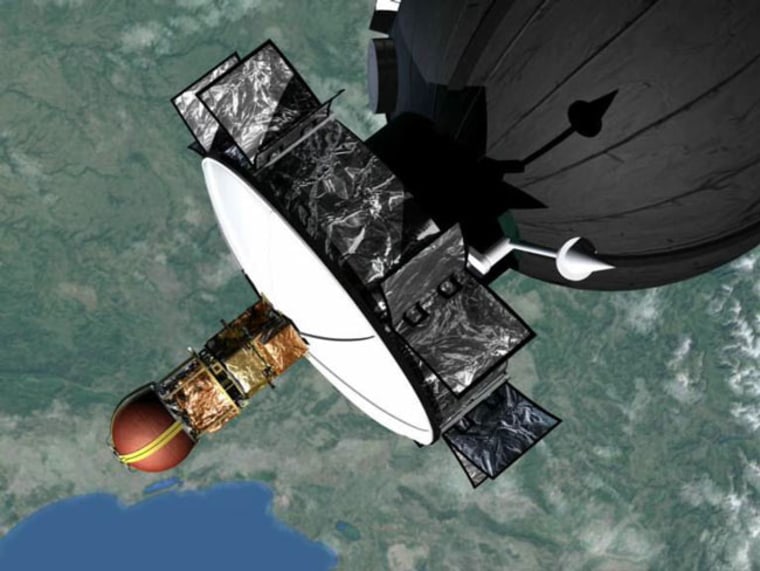A student-built satellite experiment shattered records by deploying the longest space tether ever flown in space, but the missing return capsule remains a mystery to unravel months later.
On Sept. 25, hundreds of students worldwide watched remotely as a Russian-built Foton-M3 spacecraft began unwinding a 19.7-mile-long (31.7 km) super-strong space tether no thicker than a string. The experiment's small Fotino capsule dropped from it toward Earth, preparing to release at the right moment for re-entry into the atmosphere.
The goal was to demonstrate a "space mail" system of delivering packages to Earth using just a tether.
But the experiment hit a snag when critical telemetry sensors on the tether deployment mechanism shut down. That left the onboard computer unable to control how quickly the space tether unwound from its spool. Early data suggested the tether reached a length of just 5.3 miles (8.5 km) before cutting the Fotino capsule loose.
"We were kind of disappointed by the fact," said Marco Stelzer, a mission analyst and ground support engineer with the European Space Agency.
Steizer joined the Young Engineers Satellite experiment — sponsored by the ESA Education Office — as a university student when he saw the tether idea promoted by Delta Utec SRC, a private space consultancy company that contracted with ESA. Almost 500 students from Europe, the United States, Russia, Japan, and Australia worked on YES2.
Hope revived
New telemetry data from the Foton spacecraft saved students from a mission cliffhanger, revealing that the space tether deployment had accelerated rather than slowing down as first thought.
"Later on, we found out that the tether deployed to its full length, even more than originally planned," Stelzer told Space.com.
Additional data from the U.S. Space Surveillance Network showed that the Foton spacecraft moved close to a mile higher in orbit when the capsule cut free — as expected when a 19.7-mile-long tether's swinging momentum that launched the capsule also transfers to the much heavier spacecraft.
Where's the capsule?
Having smashed the world record for the longest human-made object flown in space, the YES2 team turned its attention to what happened with the Fotino capsule. The onboard beacon had failed to activate and signal the capsule's final location.
"We have some confidence that the capsule actually came down," said Stelzer, pointing out that a full-length tether deployment would have released the capsule back into Earth's atmosphere. A U.S. ground station in Alaska did not detect Fotino flying overhead after the tether release, also suggesting the capsule re-entered instead of continuing in a low-Earth-orbit with the Foton spacecraft.
"It may have burnt up on re-entry, it may have crash-landed, it may have touched down in difficult terrain somewhere in Turkmenistan, Kazakhstan or Siberia, or its radio beacon did not transmit," said Roger Walker, YES2 project manager for ESA's Education Office, in a public statement. More information will come in the next several weeks from other experiments and sensors onboard Foton.
Whatever Fotino's fate, the YES2 team cheered the test of the "space mail" delivery system using the space tether — even if the package was lost along the way.
"We proved that tether technology actually works," Stelzer said.
Future space tethers might not only deliver parcels to Earth, but also swing spacecraft or satellites into different orbits or towards other planets.
The ESA Education Office has additional satellite projects in development, including the European Student Earth Orbiter planned for 2010 and the European Student Moon Orbiter planned for 2011.
